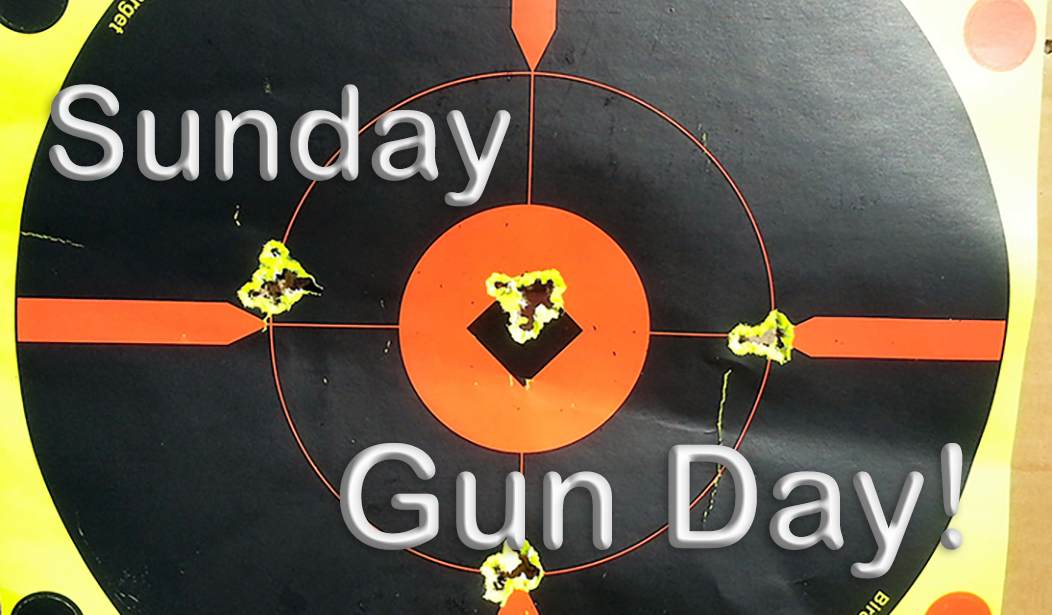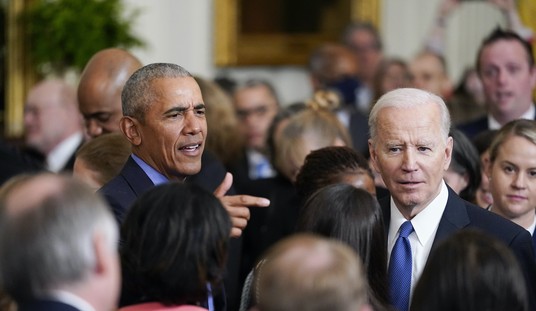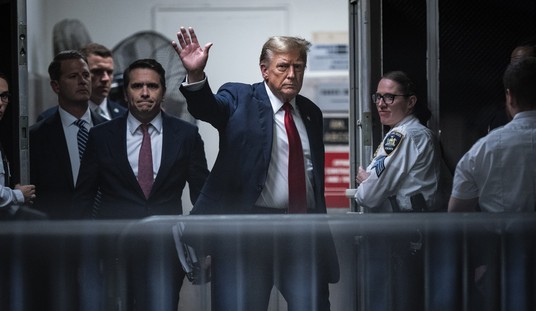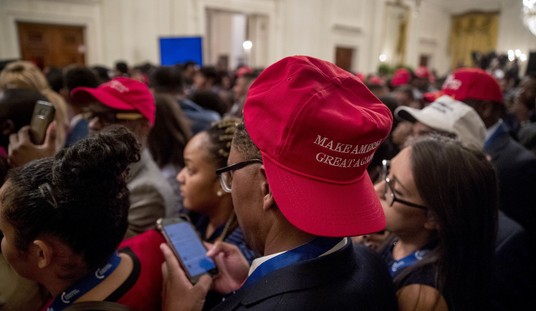The Cartridge Era Begins
At the end of the Civil War, big changes were coming to the world of six-guns, and those changes were originating in Springfield, Massachusetts. Still, revolver manufacturers in general were about to see some busy times – and the state of the art in revolvers was destined to change dramatically over the next forty-odd years.
See Part One: Sunday Gun Day XXIII - The History of the Six-Gun, Part 1
Smith & Wesson
The Smith & Wesson #1 and #2 revolvers served as proof of concept, but the pipsqueak factor didn’t do S&W’s sales any favors. If a pistolero wanted something that packed a real punch, he still had to go to a cap and ball revolver. So, in 1870, the Springfield company brought out the #3, the gun that would change things for the cartridge revolver market.
Bear in mind that Smith & Wesson still held Rollin White’s patent at this time, guaranteeing them to be the only ones that could make a revolver with a bored-through cylinder in the United States. This did White little good, as the terms of the patent agreement with S&W required White to defend against patent infringement, a bonehead move on White’s part that left him penniless while Smith & Wesson was coining a lot of money with their modern revolvers.
The #3 was made in two versions. The first was the Russian, chambered for the .44 Russian cartridge, and the second became known as the Schofield after Major George W. Schofield, who offered design advice to Smith & Wesson; the latter arm was initially chambered for the .44 S&W American, which later became the basis for the .44 Special and the .44 Remington Magnum cartridges. S&W later offered the Schofield in .44 Henry Rimfire, .44-40, .32-44, .38-44, and .45 Schofield.
Unlike the #1 and #2, the #3 guns were hinged at the bottom of the frame in front of the cylinder. This removed the necessity of removing the cylinder for loading and allowed the addition of an extractor to make the removal of spent brass easier. Now the soldier, hunter, or pistolero had a gun that was quick to load, reliable, and powerful. Quite a few notorious personages favored the big Smith, including Jesse James, John Wesley Harding, Pat Garrett, Wyatt Earp, Billy the Kid, and a young fellow named Theodore Roosevelt.
Later, Smith & Wesson continued to innovate, bringing out some of the first production double-action revolvers. The New Departure double-actions were offered for sale beginning in 1887 in .32S&W and .38S&W calibers, with the break-top design of the #3. Also known as the “Safety Hammerless,” these guns were striker-fired and had a grip safety.
But while Smith & Wesson was cranking out revolvers, the competition wasn’t idle. During the post-war years, the folks at Colt went through some bad times but were about to come roaring back spectacularly.
Colt Wasn’t Just Sitting Around
Smith & Wesson notwithstanding, the late 19th century story of revolvers is largely Colt’s story.
Sam Colt’s decision to sell six-guns to the newly-formed Confederacy was to end up costing the company badly. Sam Colt had been derided in the press as a traitor, and the Colt manufactory lost both reputation and revenue due to that decision. But when Rollin White’s patent expired in 1869, the folks at Smith & Wesson soon learned that the Colt people hadn’t just been sitting on their hands; they were planning a comeback in their own cartridge revolvers.
The first production cartridge-firing Colt, the 1871-72 Open Top, fired the .44 Henry Flat cartridge. The Open Top seemed as much as anything like a reason to use up a bunch of old cap & ball parts, and indeed before its introduction, Colt did convert a lot of old percussion guns. The Open Top was never a big seller, carrying over the percussion Colt’s open-topped frame and primitive sights. Colt also offered two versions of a pipsqueak revolver chambered in .41 Rimfire, the 5-shot House Gun and the 4-shot Cloverleaf.
But in 1873, everything in Colt’s past was wiped away when they introduced a gun the likes of which only comes along a few times in a century, a gun that was to become the stuff of legend: The Single Action Army.
Also known as the Model P, the Peacemaker, the M1873, the Frontier Six-Shooter (in .44-40 caliber), and the Gun That Won the West, the SAA was quickly adopted by the U.S. Army, which purchased many of these guns in two forms, the 7 ½” barreled “cavalry” revolver and the 5 ½” barreled “artillery” version. A 4 ¾” version was available for civilians, and quickly became much sought after by lawmen, cowboys, and guntwists of all sorts. Colt’s new single action was remarkably well balanced and had a grip that was admirably suited to be fired one-handed while the shooter’s other hand was holding reins. Many modern shooters may look at the Colt and wonder about the placement of the loading gate on the strong side of most shooters, which can make reloading a bit awkward, but it’s important to remember that the gun was designed for military use – and in those days, that meant use by horsemen.
The SAA was initially offered in .45 Colt but later also chambered in over thirty calibers, from the .22 rimfire to the .44-40, .44 Special, and .357 Magnum. In 1890, Colt offered a flat-top target model with improved sights, and in 1894 the Bisley model was brought out, named for the famous Bisley pistol range in England and intended to appeal to target shooters. Barrel lengths were eventually offered ranging from the 3” “Shopkeeper” to the 18” “Buntline” versions.
The Peacemaker quickly overshadowed Smith & Wesson’s offerings for several reasons. First, the solid frame of the Colt was generally regarded as much stronger than the hinged-frame Smith. If a cowboy or gunsel ran out of ammo and had to settle a scrap by banging his sidearm over an opponent’s head, the Smith was liable to break at the hinge or the catch; the solid-frame Colt was far more likely to survive being abused in this manner. But the primary reason was that the Colt was much handier, better balanced, and performed better under conditions of dust, dirt, dampness, and cold. It was a one-in-a-thousand design, one that persists today not only from Colt but from a dozen or more replica manufacturers.
Colt didn’t neglect the double-action market, either; in 1877, they introduced the 1877 double-action, which loaded through a gate in the same manner as the Peacemaker; it was offered in .32 Colt (the Rainmaker) .38 Long Colt (the Lightning) and .41 Long Colt (the Thunderer.) No less than Billy the Kid favored the Thunderer, carrying a brace of them on his adventures. In 1878, they brought out the last of their rod-ejector double-actions, the big Colt Alaskan in .45 Colt.
In 1889, Colt made another technological innovation when they introduced the M1889, the first production double-action revolver with a swing-out cylinder released by a sliding latch; thus, was the modern form of the double-action revolver completed. The .38 Long Colt cartridge it used, however, was sorely lacking. But in 1898 Colt addressed that by releasing the New Service revolver, a big, tough handgun chambered in the .38-40, .44 Russian, .44-40, .45 Colt, .455 Webley, and later .45 ACP, .38 Special, .357 Magnum and .44 Special. This was the first modern combat magnum, and following the much-discussed failure of the Colt 1889 revolver and its anemic .38 Long Colt cartridge in the Philippines and other venues, both the Army and Marines bought a number of .45 Colt New Service revolvers as the Model 1909, which remained in use even after the adoption of the 1911 automatic.
A few years back I ran into a guy on our gun club’s pistol range who had an old 1909 Colt. I fired a couple of cylinders through it, and while this big gun was adequately tough for its day, I wouldn’t run any of my own heavy .45 Colt loads through it; in an abundance of caution, I restrict those to my own modern revolvers. With factory ammo, the New Service points naturally, shoots well one-handed or two, and the gun’s weight makes the recoil very manageable, and quick follow-up shots are easy. It’s a damned fine piece.
Meanwhile, though, while Colt was moving from triumph to triumph, those folks up in Ilion were busy as well.
Remington Stays in The Fray
Remington Arms was beginning to transition more and more into a company that made rifles and shotguns more than handguns, but in 1875 they did introduce their answer to Colt’s Single Action Army. The 1875 Remington Improved Army revolver was a near-copy of Colt’s more successful Single Action Army, using most of the lockwork of the old 1858 Army revolver and retaining that gun’s removable cylinder. The 1875 was later refined into the 1890 Army, but Remington never succeeded in landing any big U.S. Army contracts, and so the Ilion company’s revolver line eventually fizzled out.
And a Surprise Entry!
It’s not widely known, but Winchester made a few prototype revolvers, intending to market them alongside the company’s famous lever-action rifles. Four prototypes were built, including one double-action with a swing-out cylinder; the prototypes were designed by Winchester engineer Hugo Borchardt. If that name sounds familiar, it is because he also was the brain behind the toggle-action Borchardt pistol, which formed the basis for the Luger. So, it isn’t unreasonable to say that the Winchester revolver prototypes were first cousins to the European P-08 Luger.
Even so, no Winchester revolvers ever saw production. While the history is uncertain, word is that a gentleman’s agreement was struck between Colt and Winchester, the result of which was Colt discontinuing their Colt-Burgess lever-action rifle and Winchester giving up on the revolver market. This agreement still holds today.
And Then This Happened
In 1908, a combination of events occurred that would once again shake up the six-gun market. The first was Smith & Wesson’s introduction of the very fine First Model New Century and its .44 Special cartridge. The New Century became known as the Triple Lock, due to its three locking mechanisms. It was by many accounts the best revolver made to date. Some consider it to be the finest double-action revolver ever made, and, indeed, the Triple Lock, with its redundant mechanisms and a fair amount of hand-fitting, would likely cost several thousand dollars were the identical gun made today. (In 1908, the gun sold for the princely sum of $21.)
The second thing that happened had longer-lasting implications. The excellent Triple Lock caught the attention of a young Montana cowboy, pistolero, and novice gun writer. That young man’s name was Elmer Keith, and his work with the Triple Lock and his own heavy loads for Smith & Wesson’s “38-44” and .44 Special cartridges, along with his own trademark hard-cast, flat point bullets, would change the rules for handgunners once again. In fact, Keith’s bullets and his loads for various rounds are in large part the basis for my own experiments with heavy .45 Colt loads.
The Twentieth Century
The Keith Revolution
Elmer Keith’s contributions to the development of the modern revolver/cartridge combination cannot be overstated.
Born in 1899 in Missouri but raised in Montana, Keith cut his teeth on the single-action Colt but early on became a proponent of the swing-out cylinder double-action revolver. His advocacy of double-action six-guns began with the 1908 introduction of the Smith & Wesson First Model New Century, the “Triple Lock” and its .44 Special cartridge, but his impact on the handgun world didn’t stop there.
A eulogy of Elmer Keith could easily take up a series unto itself, but we can summarize it. His work with heavy revolver loads led to the Keith-type semi-wadcutter with its characteristic convex shoulder and 70 percent implant; the Keith SWC cuts a clean hole in the paper while its hard alloy composition allows the bullet to be driven at high enough velocities to give good penetration on big game. This I can vouch for from personal experience.
Keith’s heavy loads were the basis for the modern magnum revolver cartridges we know so well. In the late Twenties and early Thirties, Keith, dissatisfied with the anemic performance of the standard 158-grain RNL .38 Special load, experimented with heavy .38 loads with 180 and 200-grain SWC bullets in the big Smith & Wesson N-frame “38-44” revolvers. These loads, after discussion with Remington and Smith & Wesson, led to the .357 Magnum cartridge. Likewise, Keith’s heavy .44 Special loads in the Triple Lock and 1950 Target revolvers led him to pester Smith & Wesson and Remington until, in 1955, they introduced the .44 Remington Magnum and the Smith & Wesson Model 29 to handle it. Keith was also instrumental in the development of the excellent but less successful .41 Magnum.
While Remington and Smith & Wesson were listening to Keith, the folks at Colt were a little less prescient. Colt had discontinued the famous Single Action Army revolver in 1941 and re-introduced it in 1955, but the latest SAA guns were built to pretty much the same pattern as the original black-powder Colts; Keith advised Colt to update their fine old gun’s lockwork and sights, but Colt left the SAA as was – which didn’t stop Keith from collecting and using many examples of this fine old gun.
Smith & Wesson historian Roy Jinks referred to Keith as the father of big-bore handgunning, and that’s a title that is well deserved. And speaking of Smith & Wesson:
Smith & Wesson Ascendant
Smith & Wesson’s 20th-century successes began with the Triple Lock, but they sure didn’t end there. A string of revolver and cartridge designs were about to make Smith & Wesson the gun builder to watch.
The constraints of the format here won’t allow me to describe all the revolvers Smith & Wesson brought out in the 20th century. So, instead of attempting that, I’ll describe a few of Smith & Wesson’s standouts.
The K-22 Masterpiece. Later relabeled the Model 17 Masterpiece, the K-frame .22 is one of the best double-action revolvers available for folks just learning the art. It’s the same frame and much the same weight as many of Smith’s .38 and .357 offerings while retaining the low recoil and economy of a .22 – it’s also a great sidearm for taking the occasional squirrel, rabbit, or mountain grouse. It was also offered in stainless steel as the Model 617.
The Combat Magnum/Model 19. Developed at the request of gun writer and lawman Bill Jordan for a medium-frame .357, the Combat Magnum was a lighter, handier version of Smith & Wesson’s original N-frame .357, the Registered Magnum/Model 27. While no less than George Patton favored the Registered Magnum – he often carried a pair of them he referred to as his “killing guns” – many highway patrolmen, Border Patrol officers, and local cops preferred the lighter version. The Model 19 also has a stainless-steel version, the Model 66.
We already mentioned the Model 29, developed at the urging of Elmer Keith and made an icon of popular culture by Clint Eastwood in the "Dirty Harry" features. While Detective Callahan described the .44 Magnum as “the most powerful handgun in the world,” the .44 Magnum only nominally held that title, as the 1957 .454 Casull outstripped it but was only available (then) in custom-shop jobs, and later developments far outweighed the .44 Magnum. But for quite a few years, it was the most powerful handgun cartridge offered in mass-produced revolvers suitable for all-day holster carry, and that’s what made the .44 Magnum as popular as it remains today.
Any discussion of Smith & Wesson revolvers should not neglect the .38 Hand Ejector/Military and Police/Victory Model/Model 10, not necessarily because it was groundbreaking or iconic in design – it wasn’t – but because it was damn near ubiquitous in police departments for much of the century. For some years, I had a pre-war .38 Hand Ejector that still carried markings for the Lake County, Colorado Sheriff’s Department; it had a thin 6” barrel, and I referred to it as my “Barney Fife revolver.” It was an unremarkable piece but, like most mid-century Smiths, solid and reliable.
My very favorite holster gun for outdoors is a late 20th-century Smith & Wesson. The 25-5 uses the same N frame as the .44 Magnum Model 29 but is chambered for the grand old .45 Colt, which cartridge I have been loading since the early eighties. My example was made in the mid-seventies and has a target hammer and trigger and the rather rare 4” barrel. It’s a fine piece, easy to handle and accurate. My favorite load for this gun uses a 255-grain hard cast Keith-type semi-wadcutter. That load (which should only be used in modern revolvers) will blow a fist-sized chunk out of the far side of a railroad tie, making it powerful enough for most work you’d need to carry out with a sidearm, even here in Alaska.
Throughout the Depression, WW2, and the post-war years, Smith & Wesson largely dominated the six-gun market, but that doesn’t mean Colt was just sitting around.
Colt Reacts
Colt still managed to hit a home run in the 20th century: The Python.
Colt’s 20th-century story is dominated by one sidearm, although not a revolver: The Colt/Browning 1911 automatic. But Colt still was in the revolver business, not only with the famed single actions but also with their double-action guns based on the original 1889 design. While Colt brought out such fine pieces as the Official Police, the Police Positive, and the Officer’s Target on that basic frame, the Python was the culmination. A hand-fitted, polished gun, you won’t find a more beautiful revolver than an original Python in the Colt Royal Blue finish.
Back in the ‘80s, an old buddy of mine had a 6” blue Python he used to compete in bowling pin shoots. I tried it a few times myself at the pin shoots. The Python’s slick, smooth double-action pull made it almost ridiculously easy to wipe five bowling pins off a table in a big hurry; a lot of those pin shooters used Pythons for that very reason. Like the 1851 Navy before it, the Python is one of the best-handling six-guns around.
The “Snake” family of Colt revolvers also included include the .38 and .22 caliber Diamondback and the .44 Magnum Anaconda. Colt also offered a lower-priced .357 in the form of the Trooper. Like the reintroduced Single Action Army, all these double-action guns save the Anaconda shared an old frame design and much of their lockwork, which had not changed a great deal since the M1889 model; this led to an opening by one of America’s new generation of gun designers.
The New Guy - Bill Ruger
While Colt wasn’t listening to Elmer Keith’s calls for a modern single-action, someone else was.
Bill Ruger’s entry into the handgun market was the Ruger Standard, a neat, trim semi-auto vaguely resembling the Luger in form and grip configuration. It was a nice-handling gun, and unlike some autos, it had its barrel and receiver attached in a single unit, and the sights firmly mounted on each. It was good enough to attract the attention of my notoriously frugal father, who bought one mail-order (!) around 1955; I still have that old 6” Standard in my gun safe.
We aren’t here to discuss the Standard, though.
A funny thing happened in the early ‘50s. The post-war years led to a return to traditional entertainment; also, the rise of television gave an outlet for the most favored of post-war American entertainments, the Western. The popularity of Westerns led to a quick-draw craze, which led to an increase in demand for traditionally styled single-action revolvers.
During these years, Colt’s Single Action Army was a custom shop piece, pricey enough to be out of the reach of plenty of folks. Some replicas were made by Great American and a few other companies, but the quality was iffy, and the design was a little different from the 19th-century Colt pattern. While Elmer Keith was unable to convince Colt of the need to modernize the single-action revolver, in Bill Ruger he found a more receptive audience. In 1953 Ruger brought out the Single-Six, a .22 caliber single-action revolver, followed in 1955 by the Blackhawk, offered in .357 Magnum and .45 Colt – later in a wider variety of chamberings from .32 H&R to the .480 Ruger. In 1957, a Ruger employee found some discarded .44 Magnum cases on a range frequented by Smith & Wesson engineers and deduced that S&W was bringing out a new cartridge; this resulted in Ruger’s introduction of their single-action .44 Magnum, the Super Blackhawk, right on the heels of Smith & Wesson’s announcement of the Model 29 and the .44 Magnum cartridge.
Ruger’s revolvers were something new: Solid, with a slightly beefier frame than the traditional Colt, and using modern coil springs in the lockwork rather than the more fragile leaf springs used by other makers. They very quickly gained a solid reputation with shooters. While Ruger didn’t introduce a double-action revolver until 1977, those guns quickly gained a following as well, but it was the Single-Six, the Blackhawk, and the Super Blackhawk that brought the single-action revolver into the modern era. The final variation on that theme was the Ruger Vaquero, which took the strong frame and modern guts of the Blackhawk and outfitted it with the traditional style (including fixed sights) of the traditional Colts; thus, the single-action came full circle, with a traditional style and modern hardware. I have one, a 4 5/8” barreled stainless steel model with ivory polymer grips, and it’s a joy; it handles my heavy .45 Colt loads with aplomb and is light enough at 38 ounces to carry around all day.
And Then This Happened
In 1987, the state of Florida did something unprecedented; they changed their laws on the issue of carrying concealed handguns. Previously, like every other state at that time, Florida’s laws left the issuance of concealed-carry permits up to the discretion of local law enforcement, which meant that in many jurisdictions it was impossible to get such a permit unless you were wealthy, well-connected, or both. Under the new law, assuming you passed a background check and a class, law enforcement was prohibited from denying one a permit; this was to lead to an explosion of such new laws changing the process from “may-issue” to “shall-issue.”
The dawn of the 21st century saw most states with liberalized concealed-carry laws, and this had changed the emphasis of gun designers. Where the bulk of the 20th century’s target markets for handgun builders were hunters, ranchers, and outdoorsmen of every stripe, the new focus was on the concealed-carry market. The demand was for smaller, lighter revolvers that still packed enough punch for self-defense use.
But there was another, contradictory trend that began in the late 20th century, and that was the advent of the “monster” revolver. These two trends, along with the remaining traditional holster gun market, would finalize the present state of the six-gun.
The Six-Gun as It Stands
Today’s Market
It’s interesting to note that, aside from a few details, the only real improvements in revolvers since the mid-20th century have been in machining techniques, metallurgy, and ammunition. The “classic” Model 25-5 Smith & Wesson made today has the same lockwork and ergonomics as my mid-Seventies version; the highly-regarded Ruger Blackhawk likewise hasn’t changed much since the old 3-screw version gave way to the newer, transfer-bar action.
But the market sure has changed, and in the last twenty to thirty years gunmakers have responded with an explosion of new six-guns – and some five-guns.
Concealed-Carry revolvers
Most folks prefer autos for concealed carry guns. I’m one of those folks, normally toting around a Glock 36 on my daily errands. But there are plenty of good compact revolvers out there suited for concealed carry as well. And, some of the best of them have been around for a long time.
See Related: Of Course: Ohio's Gun Violence Rates Show That Its Permitless Carry Law Prevents Crime
The classic, of course, is the 2” barrel, .32 or .38 caliber snubbie. These certainly aren’t target pieces; an old friend of mine once derisively commented that the standard 2” snub-nose was only useful if you were in a shootout inside a crowded elevator. But a 2” revolver can be an effective CCW piece, especially at the ranges where such confrontations actually occur.
Snubnose revolvers tend to have two categories: standard-frame guns with short barrels, and small-frame dedicated snubnose guns.
An example of the first is the Ruger GP-100, K-frame Smith & Wesson Model 19, or the Colt Python, all of these being full-frame .357 Magnum guns with 2 ½” barrels. These are fine pieces, but it seems to me that, if you’re going to carry a full-size frame gun, you may as well go with more barrel. A 4” barrel is no harder to carry than a 2 ½” one, and the added velocity and sight radius is conducive to better shooting.
The other side of the coin is the dedicated snubbies like the Ruger SP-101, the newer Ruger LCR, the six-shot Colt Detective Special, and the five-shot Smith & Wesson 638 and 642 Airweights. These are light, easy to hide in lightweight summer clothing, and most of the newer guns are capable of handling .38 Special +P ammo – not unlike Elmer Keith’s old “38-44” loads – if you’re willing to shoot a short, light gun with heavy loads. If I were to choose a snubbie for concealed carry, it would be one of these in the latter category.
One interesting little carry wheelgun is the Charter Arms Bulldog, a 2 ½” barreled powerhouse chambered for the .44 Special. The 5-shot Bulldog is available with an open hammer, a shrouded hammer, and a double-action-only hammerless version. It’s well worth checking out if you’re not too recoil-adverse and want a concealable revolver that packs a punch.
Now the second recent trend in revolver development, one that hearkens back to the old Colt Walker, finds manufacturers going in the opposite direction altogether.
The Behemoths
The Smith & Wesson line of X-frame monster revolvers had their genesis at the 2002 SHOT show when Smith & Wesson’s Handgun Product Manager Herb Belin pitched the idea of a huge-framed mega-revolver to the sales staff. The sales staff must have liked the idea, because S&W worked with Cor-Bon on ammo, and the X-frame revolver and the .500 S&W cartridge were born. A powerhouse it is, too, launching a 400-grain bullet at 1600 feet per second. But it’s not a holster gun; the first model 500 weighed 73 ounces, compared to 37 for a .45 Colt Vaquero or 47 for an 8 3/8” Model 29 .44 Magnum. The X frame was visibly heavier and longer than the N-frame guns, making this monster unsuitable for casual holster carry; the release of the model 500 saw a corresponding rush by holster makers to find a way to carry the damn thing.
A few years later, Smith & Wesson doubled down by offering the same X-frame in the .460 S&W Magnum, basically a .454 Casull on steroids. Like the Model 500, this wasn’t really a holster gun.
Ruger entered the game in 2003, bringing out the .480 Ruger (actually a .475 caliber) on the 53-ounce, double-action Super Redhawk. The cartridge was a slightly attenuated version of John Linebaugh’s .475, and the beefy Redhawk frame allowed for a six-shot cylinder even with the big round. Here was something different; a monster-caliber handgun that was more easily portable, at least more so than the X-frame Smiths. There is even a 2” and 4” version, called the Alaskan. Even in this trim, the huge-framed Super Redhawk is a chore to carry around in a traditional holster and slow-to-clear leather. Later, Ruger brought out the .480 in the single-action Super Blackhawk, which was somewhat better from the carry standpoint.
But the king of the monsters may be Magnum Research’s .45-70 revolver, the aptly named BFR. This is a perfectly ridiculous object, weighing in from 4.7 to 5.3 pounds, overall length from 15” to 17.5”. It’s also available in .30WCF, .460 and .500 S&W chamberings. The question is, “Why?” It’s only marginally handier to tote around than a rifle, and the same rounds in a carbine would be far easier to shoot well and deliver more velocity to boot. The BFR packs a pretty good punch but is far too heavy and cumbersome to put into action quickly. I’m hard-pressed to determine a reason for this piece.
A few years back, an outfit called Century Arms made a .45-70 revolver, but the two examples I’ve handled were of such poor workmanship that I wouldn’t care to try firing one unless I pulled the trigger with a string from a safe distance.
Monster revolvers are interesting novelties, but that’s about all I can say about them. Further, I can’t see how most casual shooters would care to shoot them enough to develop any real proficiency. Even the .44 Magnum is more flash and bang than some shooters care for; my son-in-law was looking to buy a .500 S&W revolver until he made a good deal on a Ruger Super Blackhawk, which he shot some and happily went back to his .357. A sidearm is just that, a sidearm, meant to be carried all day in reasonable comfort. I know from personal experience that my favored .45 Colt loads will let daylight into both ends of a big Iowa farm-country whitetail, the long way, and that should be enough power for most handgun work. I’ll stick with that. Your mileage may vary.
And, as always, there are still some odd ducks still floating around the six-gun world.
Oddballs
Every time period that has seen revolvers built has seen some oddball guns, and the present day is no exception. Nowadays the oddball contingent contains two of a kind, brothers by another mother if you will: The Taurus Judge and the Smith & Wesson Governor, but fine examples of a solution looking around for a problem.
Both (ugly, in my eye) guns are double-action revolvers ostensibly chambered for the .45 Colt, but with elongated cylinders enabling them to also chamber and fire 2 ½” .410 shotgun shells. Why, I have very little idea.
The short .410 round is of very limited use when fired from a shotgun; from a short revolver barrel, I can only see it being useful if you are shooting rats in tight quarters at very short range, or possibly for dealing with snakes. There are slug loads for the short .410, but a standard .38 special 158-grain RNL easily outclasses them. Buckshot? Again, why? Get a standard revolver, learn to shoot it well, and use good-quality ammo and you’ll accomplish anything that needs to be done.
Another odd duck is the Mateba Auto revolver. Yes, you read that right; an automatic revolver. The Brits made something similar back in the early 20th century, the Webley-Fosbury automatic revolver, but the Mateba is bigger, brawnier, and more powerful, being available in .44 Magnum and .454 Casull. And unlike standard revolvers, the Mateba (like the Webley-Fosbury) uses the gun’s recoil to turn the cylinder and cock the hammer for the next shot.
Fortunately, there’s a wide variety of traditional holster irons available.
Traditional Holster Guns
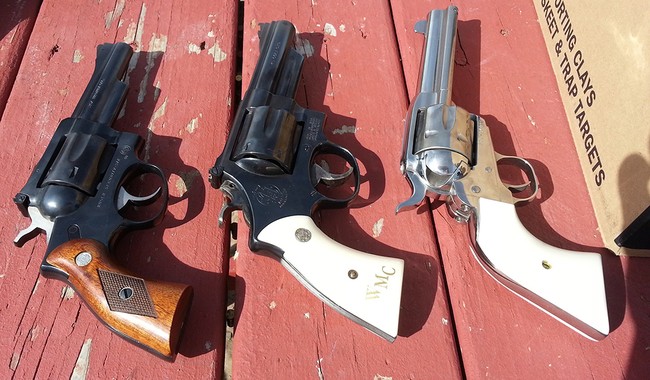 Fortunately, the standard holster gun market today is an embarrassment of riches.
Fortunately, the standard holster gun market today is an embarrassment of riches.
The two oldest players still in the game, Colt and Smith & Wesson, are going strong. Colt has focused their handgun line mostly on autos, though, and today only offers two wheelguns: the Cobra snubbie and the excellent Single Action Army, still in the market after almost a century and a half.
Smith & Wesson offers a much, much richer variety. Ranging from compact snubbie carry guns to their “Classic” series that reproduces such great works as the Model 17 “K-22” Masterpiece, the original Model 27 “Registered Magnum,” Dirty Harry’s Model 29, and my own favorite Model 25. Whatever your wheelgun needs, Smith & Wesson can likely supply something.
Ruger produces some great guns today as well. The classic Blackhawk in original trim as well as a Bisley flat-top model and, of course, the 19th-century themed Vaquero and the magnum Super Blackhawk. Ruger also provides their carry revolvers described above as well as the GP-100 series and the big Redhawk and even bigger Super Redhawk in a variety of trims.
If replicas are your cup of tea, I recommend Uberti. This Italian manufacturer produces first-rate replicas not only of Colt’s Single Action Army but also of the Smith & Wesson #3, and a wide variety of cap-and-ball replicas too; the Walker Colt, the various Colt Dragoons, the 1851 Navy and 1860 Army as well as the 1858 Remington Army.
The wealth of modern and replica wheelgun manufacturers and models is such that the bandwidth I’m allotted won’t allow me to describe them all. But what more fun could you have than shopping around for yourselves? It’s a hell of a great time to be a six-gun fan.
And Then This Happened
The series concluded.
Why do I like revolvers? Well, there are several reasons. Partly because I cut my teeth on one, the 1851 Navy Colt replica I described in Part 1. Partly because it’s easier to hand load for wheelguns, as case and overall load length and bullet configuration aren’t as critical. Partly because revolvers run generally more powerful than autos of similar bullet diameter, at least autos of manageable size, and I spend a fair amount of time out in the boonies where toothy critters roam and concealment isn’t an issue. Mostly, though, it’s just because I like them. I wouldn’t surrender by 25-5 Smith for all the tea in China.

